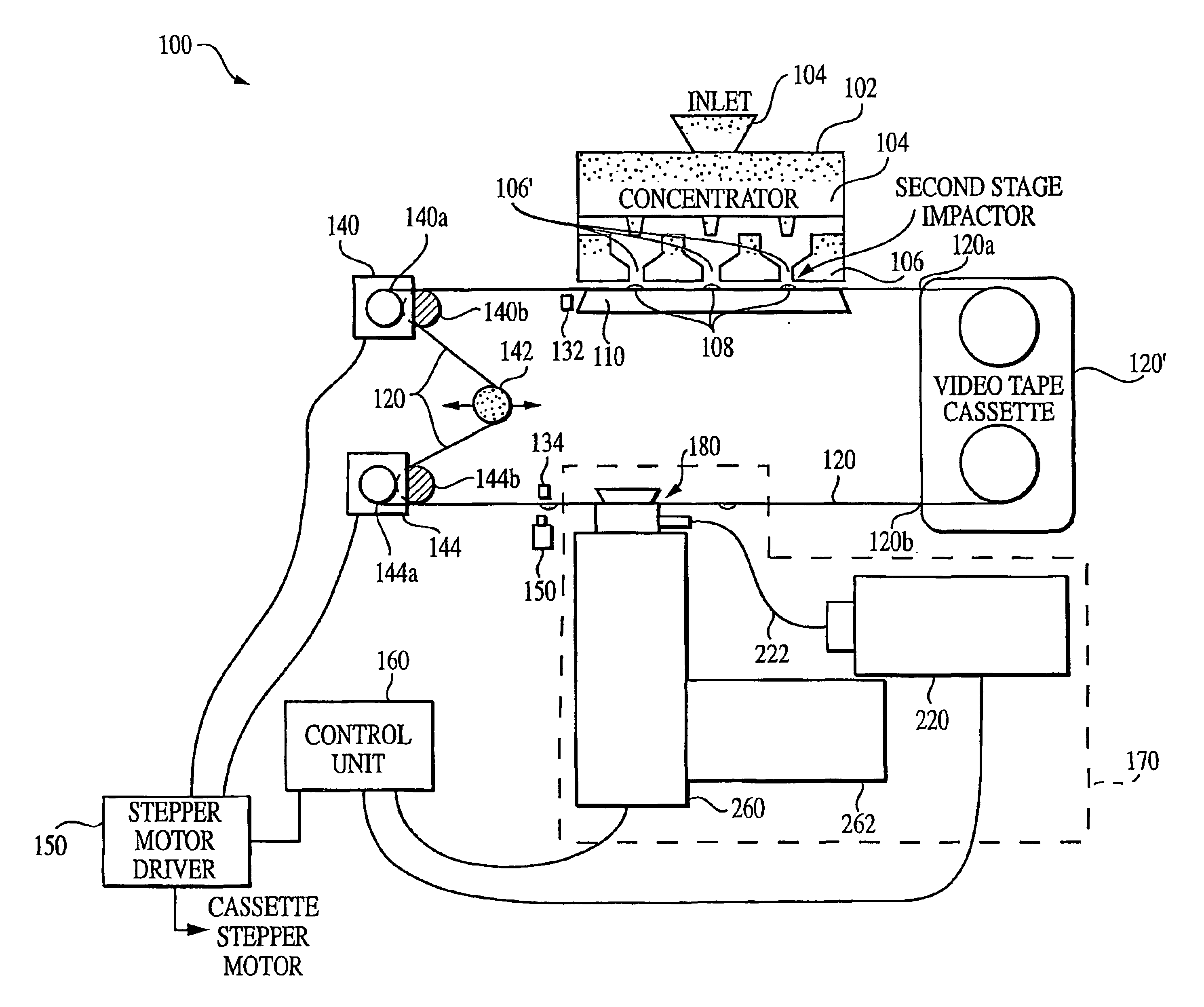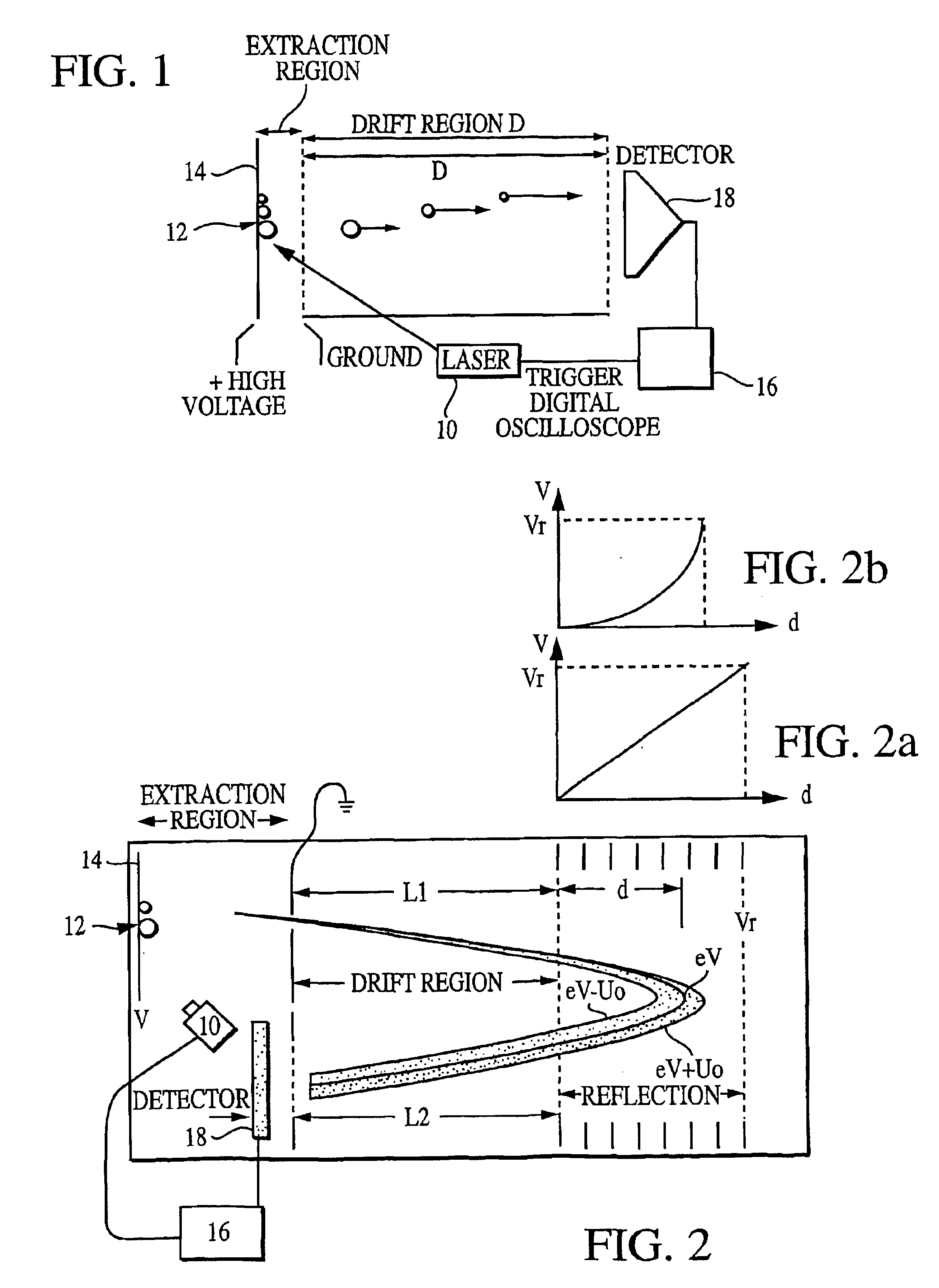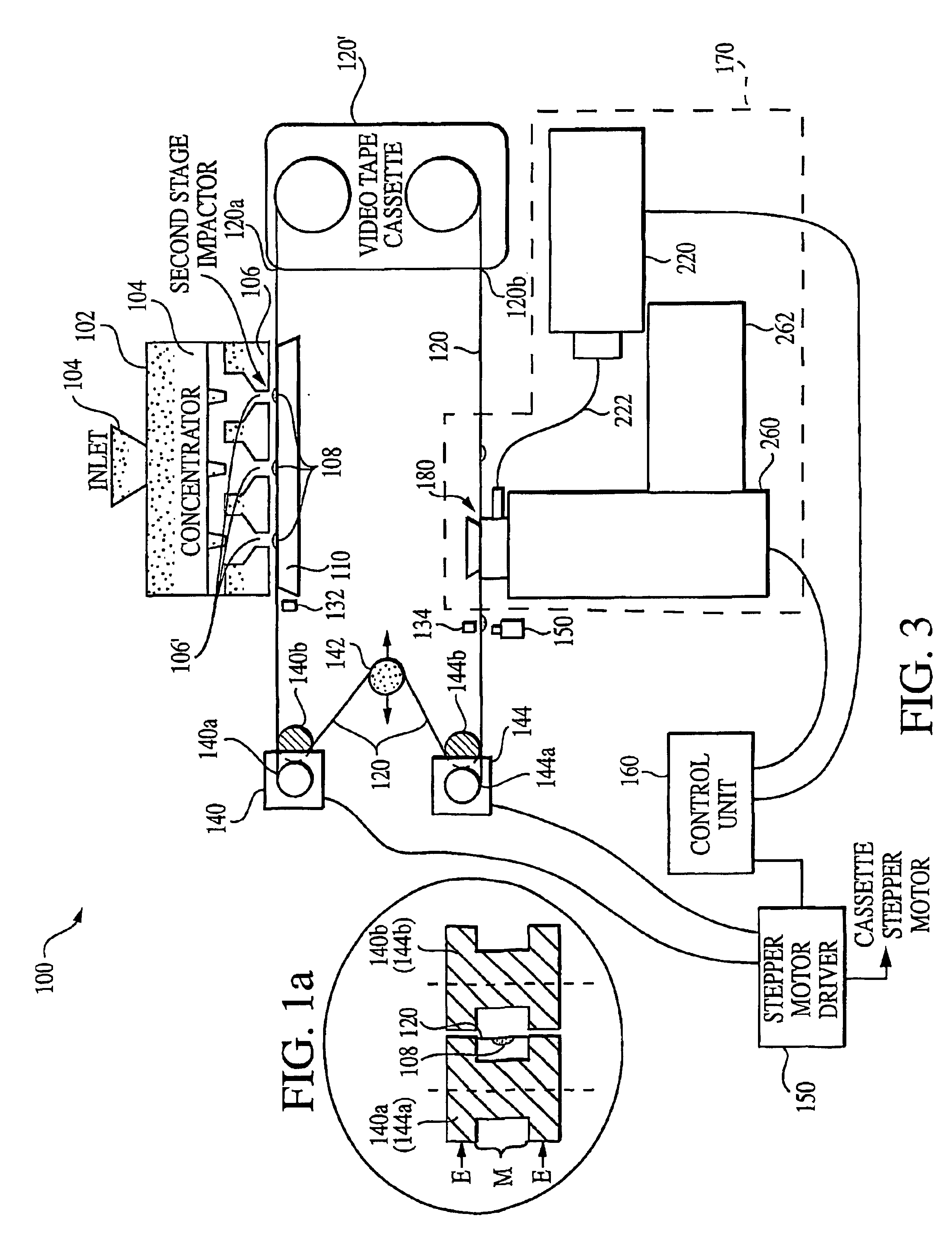Portable time-of-flight mass spectrometer system
a mass spectrometer and time-of-flight technology, applied in the field of mass spectrometry and mass spectrometers, can solve the problems of high data acquisition time of typical scanning mass spectrometers, confined to laboratory or other fixed sites, and the typical mass spectrometer technology has not been used as a field portable detection system, etc., to achieve reliable and rapid detection of small levels of biological and chemical samples, wide agent bandwidth, and high sensitivity
- Summary
- Abstract
- Description
- Claims
- Application Information
AI Technical Summary
Benefits of technology
Problems solved by technology
Method used
Image
Examples
Embodiment Construction
Referring to FIG. 3, the principle components of an embodiment of the system 100 of the present invention are shown. The components of the system 100 maybe mounted atop a portable platform, within a carrying case, etc. As will become evident below, the system 100 is designed to run automatically. That is, it may be placed in where detection of chemical or biological agents is desired, and it will sample the environment and analyze and identify such agents on an ongoing basis.
Air or other environmental specimen is drawn (via a vacuum) into a collector 102 via an inlet 104. Upon entering the collector 102, the specimen passes through a concentrator 104 and a second stage impactor 106. The impactor 106 serves to separate particles from the airflow and provide sample deposits 108 on a transport tape 120 (described further below) through a number of impaction nozzles 106′. The air collection portion so configured has a high throughput and high collection efficiency. Thus, a high concentr...
PUM
| Property | Measurement | Unit |
|---|---|---|
| length | aaaaa | aaaaa |
| field portable mass spectrometer | aaaaa | aaaaa |
| time of flight | aaaaa | aaaaa |
Abstract
Description
Claims
Application Information
 Login to View More
Login to View More - R&D
- Intellectual Property
- Life Sciences
- Materials
- Tech Scout
- Unparalleled Data Quality
- Higher Quality Content
- 60% Fewer Hallucinations
Browse by: Latest US Patents, China's latest patents, Technical Efficacy Thesaurus, Application Domain, Technology Topic, Popular Technical Reports.
© 2025 PatSnap. All rights reserved.Legal|Privacy policy|Modern Slavery Act Transparency Statement|Sitemap|About US| Contact US: help@patsnap.com



